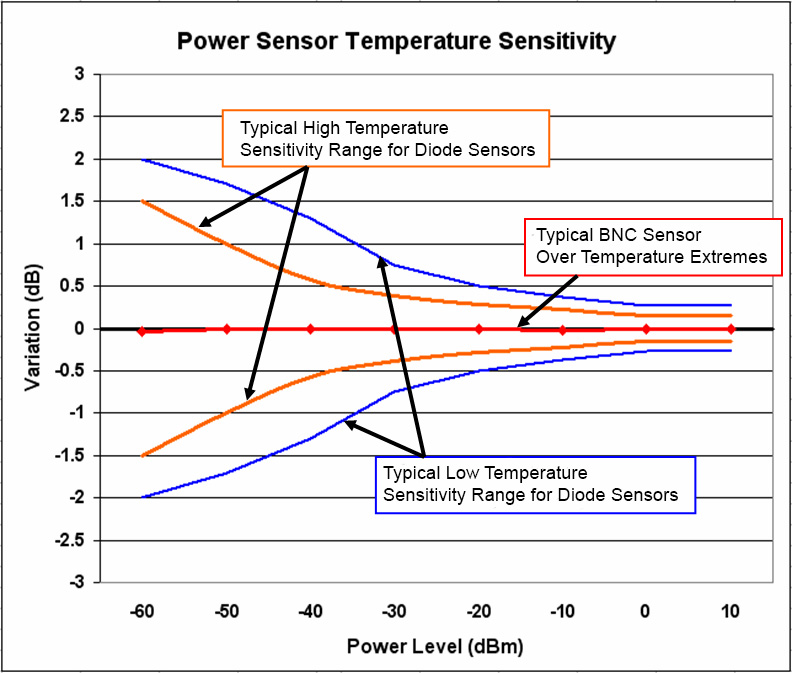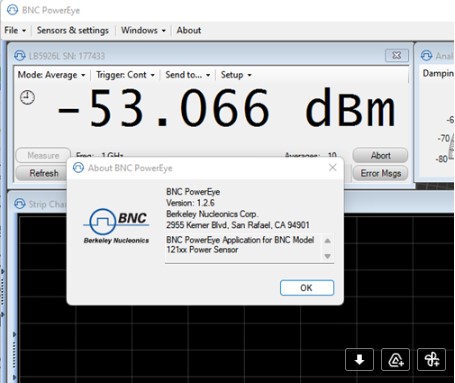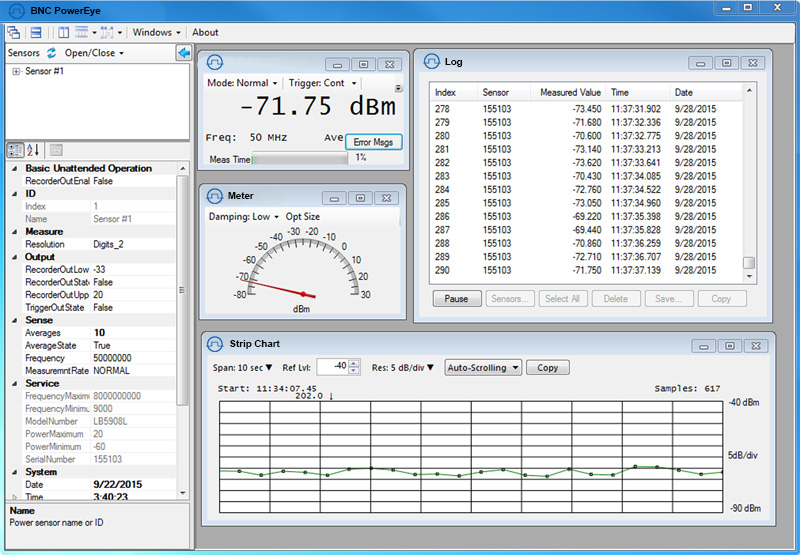Berkeley Nucleonics proudly introduces the Model 12100 Series RF average power sensors, offering 9 kHz to 67 GHz bandwidth, -60 dBm to +26 dBm dynamic range, and seamless true RMS measurements across all modulation types. Designed for simplicity and precision, these compact sensors feature plug-and-play operation, deep internal memory, and industry-leading accuracy without the need for pre-use calibration or bulky equipment. Bundled with the intuitive PowerEye software and full API support, the 12100 Series is ideal for both lab and field applications—delivering powerful RF measurement capabilities at a cost-effective price.
Overview
| Model Number | 12108L | 12108S | 12118L | 12118S | 12126L | 12126S | 12140L | 12140S | 12144L | 12144S | 12154L | 12154S | 12167L | |||||||
| Frequency Range | 9 kHz to 8 GHz | 1 MHz to 8 GHz | 9 kHz to 18 GHz | 1 MHz to 18 GHz | 9 kHz to 26.5 GHz | 1 MHz to 26.5 GHz | 9 kHz to 40 GHz | 1 MHz to 40 GHz | 9 kHz to 44 GHz | 1 MHz to 44 GHz | 9 kHz to 54 GHz | 1 MHz to 54 GHz | 9 kHz to 67 GHz | |||||||
| Get A Quote (Price Info) | $3,350.00 | $2,940.00 | $4,390.00 | $3,980.00 | $5,345.00 | $4,620.00 | $6,970.00 | $6,330.00 | $7,350.00 | $6,775.00 | Contact for Pricing | |||||||||
| Input Power Range | -60 dBm to +26 dBm | |||||||||||||||||||
| Continuous Average Power |
+26 dBm (63 mW) |
Damage Level: l: +29 dBm (800 mW) | ||||||||||||||||||
| Peak Pulse Power | +33 dBm (2 W) | Damage Level:+36 dBm (4 W) | ||||||||||||||||||
| Maximum Energy Per Pulse | 20 W-us | Damage Level: 40 W-us | ||||||||||||||||||
| Maximum DC Input Voltage | Low: 10 VDC (On the RF Input) Standard: 16 VDC (On the RF Input) |
|||||||||||||||||||
| Dimensions |
Body Diameter: 1.51in [38.354mm] Length: 3.55in [90.17mm] Length (w/ Type-N Male Connector): 3.95in [100.33mm] Width: 1.53in [38.862mm] |
|||||||||||||||||||
| Weight | 0.3 Ibs [0.14 kg] | |||||||||||||||||||
| Recommended Calibration Cycle | 1 year | |||||||||||||||||||
Features |
Applications |
|
|
Model 12100 Power Sensor Temperature Sensitivity




Media
Price List
Price lists are available to our registered users. To view pricing for this and other products, please log in or create a free account.









